“Soldiers, Sailors and Airmen of the Allied Expeditionary Force: You are about to embark upon the Great Crusade, toward which we have striven these many months. The eyes of the world are upon you. The hopes and prayers of liberty-loving people everywhere march with you. In company with our brave Allies and brothers-in-arms on other Fronts, you will bring about the destruction of the German war machine, the elimination of Nazi tyranny over the oppressed peoples of Europe, and security for ourselves in a free world.”
~General Dwight D. Eisenhower
Supreme Allied Commander, June 6, 1944

1779 – Patrick Henry died at the age of 63.
He was an American Founding Father and the first Governor of Virginia, but is best known for his declaration to the Second Virginia Convention in 1775 (“Give me liberty, or give me death!”).
Truth be told, the “Lion of Liberty,” like many of his peers, didn’t believe everyone deserved liberty.
While he will forever be remembered for his fiery speech against enslavement by tyrants, he left his estates and 67 slaves to be divided between his wife and his six sons.
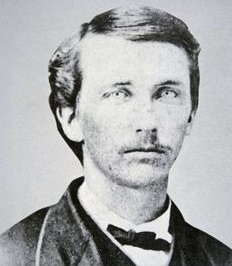
1865 – William Quantrill, infamous Confederate guerrilla leader during the Civil War, died from wounds suffered in a battle with Union troops the previous month. He was 27.
“Quantrill’s Raiders” (which at one time included Frank and Jesse James, along with the Younger brothers) attacked Union patrols and supply convoys, doing it in a manner so savage it defies belief. Those raids were enough to earn Quantrill a reputation as a cold blooded killer but his most notable operation was the Lawrence Massacre.
Angered that Lawrence, Kansas was being used as a sporadic base for Union soldiers, Quantrill rode in with a force of 450 raiders. Over a four-hour period, they pillaged and burned a quarter of the buildings in town, and killed 183 men and boys, dragging some from their homes to murder them in front of their families.
On May 10, 1865, Quantrill and his band were caught in a Union ambush at Wakefield Farm in Kentucky. Quantrill was shot in the back and paralyzed from the chest down. He was brought to a military prison hospital Louisville, Kentucky, where he died.

1889 – The Great Seattle Fire destroyed the entire central business district of Seattle, Washington.
The fire – started when glue being melted over a gasoline fire boiled over and spread to the floors, which were covered by wood chips and turpentine – burned for several hours, destroying 25 blocks and causing as much as $20 million in damage ($527 million in today’s dollars).
As a result of the fire, streets in the Pioneer Square neighborhood in Seattle were elevated 22 feet above the pre-fire street level and new buildings made of wood were banned.
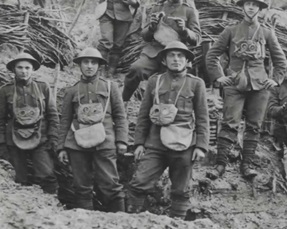
1918 – The first large-scale battle fought by American soldiers in World War I began in Belleau Wood, northwest of the Paris-to-Metz road.
The third German offensive of the year had penetrated the Western Front to within 45 miles of Paris. U.S. General John J. Pershing ordered a counteroffensive to drive the Germans out of Belleau Wood.
France, with the help of the United States, had formed a last line of defense along the Marne River near Chateau Thierry. The U.S. 4th Marine Brigade was in the center with the French 167th Division on its left and U.S. Army 3rd Brigade to the right. The advancing German spearhead struck the Marine brigade near Belleau Wood.
U.S. Marines under Army General James Harbord led the attack against the four German divisions positioned in the woods. By the end of the day, the Marines had gained a foothold in Belleau Wood but had suffered more than 1,000 casualties.
The battle is perhaps best known for a quote from Captain Lloyd Williams of the 2nd Battalion, 5th Marine Regiment.
Early in the battle, when French soldiers were running from the battlefield, one suggested that the Marines should join the retreat. Williams responded “Retreat? Hell we just got here.”
And so began a 26-day long action where none of the participants ever quite knew where they or the enemy were inside that mile-square dark forest.
The success of the Marines in clearing such a strategically important place came at a cost. Out of the 9,777 U.S. casualties, 1,811 were fatalities.
In terms of overall casualty figures, the casualties at the Somme and Verdun dwarf the number of deaths at Belleau Wood.
However, the psychological damage the defeat had on the German military cannot be underestimated.
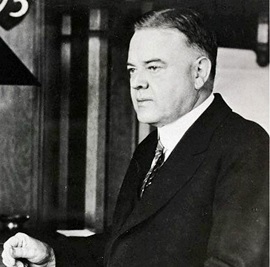
1932 – Think taxes are high today?
On this date, President Herbert Hoover signed the Revenue Act of 1932, raising the top personal income tax rate from 25 to 63 percent, doubling the estate tax and raising corporate and estate taxes by 15 percent.
The surtax rate was estimated to bring in an addition $88 million dollars the following year, badly needed to stabilize the country’s debt.
The House version of the bill also included a provision for a one-cent tax on imported fuel. An amendment widened it to a tax on all fuel, including gasoline, payable at the pump. It was buried amidst excise taxes on many other materials and products, including coal, jewelry, postal stamps and weapons, and passed without a vote. Thus the first federal tax on gasoline was established.
Hoover, after signing the bill said (with a straight face), “The willingness of our people to accept this added burden in these times in order impregnably to establish the credit of the Federal Government is a great tribute to their wisdom and courage.”

1933 – Eager motorists (and movie buffs) parked their cars on the grounds of Park-It Theaters, the first-ever drive-in movie theater, located on Crescent Boulevard in Camden, New Jersey.
Park-It Theaters – the term “drive-in” came to be widely used only later – was the brainchild of Richard Hollingshead, an auto parts sales manager.
Advertising it as entertainment for the whole family (“The whole family is welcome, regardless of how noisy the children are.”), Hollingshead charged 25 cents per car and 25 cents per person, with no group paying more than one dollar.
The drive-in had speakers installed above the screen which caused a sound delay affecting patrons at the rear of the drive-in’s field.
In the beginning, there were no double features. The first film shown was the Adolphe Menjou film Wife Beware.
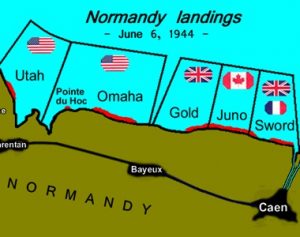
1944 – Allied powers crossed the English Channel and landed on the beaches of Normandy, France, beginning the liberation of Western Europe from Nazi control during World War II.
The day before, U.S. General Dwight D. Eisenhower, the supreme commander of Allied forces in Europe had given the go-ahead for Operation Overlord, the largest amphibious military operation in history.
On his orders, 6,000 landing craft, ships and other vessels carrying 176,000 troops began to leave England for the trip to France.
That night, 822 aircraft filled with parachutists headed for drop zones in Normandy. An additional 13,000 aircraft were mobilized to provide air cover and support for the invasion.
By dawn on June 6, 18,000 parachutists were already on the ground; the land invasions began at 6:30 a.m. The British and Canadians overcame light opposition to capture Gold, Juno and Sword Beaches; so did the Americans at Utah Beach.
The task was much tougher at Omaha Beach, however, where 2,000 troops were lost and it was only through the tenacity and quick-wittedness of troops on the ground that the objective was achieved.
By day’s end, 155,000 Allied troops – Americans, British and Canadians – had successfully stormed the beaches at Normandy.
Within three months, the northern part of France would be freed and the invasion force would be preparing to enter Germany, where they would meet up with Soviet forces moving in from the east.

1964 – Two U.S. Navy jets flying low-altitude target reconnaissance missions over Laos were shot down by communist Pathet Lao ground fire.
The downing of the two RF-8A Crusader jets was made public, but the full extent of the U.S. involvement in Laos was not.
In fact, the U.S. fighter-bombers were flying combat missions in support of Royal Lao forces in their war against the communist Pathet Lao and would continue to do so until 1973.
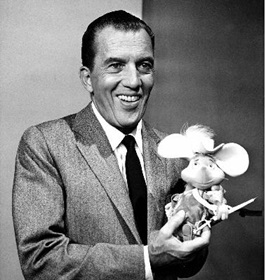
1971 – Twenty-three years after its 1948 premiere, The Ed Sullivan Show aired for the final time on CBS.
Sullivan’s variety show was the premiere television showcase for entertainers of all kinds, including comedians, plate-spinning vaudeville throwbacks, live performances Broadway shows and, most significantly, some of the biggest names in rock and roll.
And of course, Topo (“Eddie, kiss me goodnight!”) Gigio.
The 10-inch tall mouse puppet (shown above) appeared on more than fifty Sullivan shows and he had the honor of closing the final show in 1971.
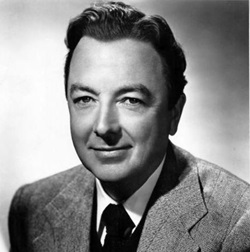
1979 – Actor Jack Haley, best known for his portrayal of the Tin Man in The Wizard of Oz, died of a heart attack at the age of 83.
Wizard Factoid: Haley’s son was married (for five years) to Liza Minnelli, the daughter of his Wizard of Oz co-star Judy Garland.

1981 – A nine-car train, filled with approximately 1,000 passengers, was traveling through the northeastern state of Bihar about 250 miles from Calcutta. Outside, monsoon-like conditions were battering the region. Extremely hard rains were swelling the rivers and making the tracks slick.
When a cow and a Hindu engineer – who believed that cows are sacred animals – entered the picture, the combination led to tragedy.
As the train approached the bridge over the Baghmati River, a cow crossed the tracks. Seeking to avoid harming the cow at all costs, the engineer braked too hard. The cars slid on the wet rails and the last seven cars derailed straight into the swollen river.
After a multi-day search, 286 bodies were recovered but more than 300 missing people were never found.
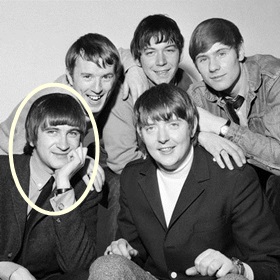
2003 – Musician Dave Rowberry died of heart failure at the age of 62.
He replaced keyboardist Alan Price in the Animals in 1965 and played many of the group’s hit songs, including We Gotta Get Out of This Place, It’s My Life, Don’t Bring Me Down, Inside-Looking Out, and See See Rider.
When the Animals were inducted into the Rock and Roll Hall of Fame in 1994 however, only the original five members were honored despite attempts by fans to have Rowberry inducted with the other members.

2005 – Academy Award winning actress Anne Bancroft died of uterine cancer at the age of 73.
Although she won the Academy Award for Best Actress for her stunning performance in The Miracle Worker, she was best known for her performance as the predatory Mrs. Robinson in The Graduate – a role that earned her an Academy Award Best Actress nomination.
She was twice more nominated as Best Actress (The Turning Point and Agnes of God) but deeply resented the way The Graduate overshadowed her other film work.
Graduate Factoid: Despite playing the “older woman” role in The Graduate, Bancroft was, at the age of 36, only six years older than Dustin Hoffman, the “young college graduate” she seduced in the film.

2006 – Singer/songwriter Billy Preston died of respiratory failure at the age of 59.
In addition to his outstanding solo career (Nothing From Nothing, Will It Go Round In Circles, Outa-Space and many more) Preston was the only musician to be credited on a Beatles recording other than the group’s four members: the group’s number-one hit Get Back was credited to “The Beatles with Billy Preston”.
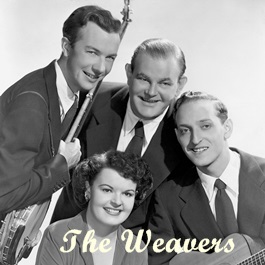
2015 – Folk singer and political activist Ruth Alice “Ronnie” Gilbert died of natural causes at the age of 88.
She was a co-founder of The Weavers, the seminal quartet that helped propel folk music to wide popularity in the 1950s and 1960s and established its power as an agent of social change.
The sole female in the group, her voice could be heard, blending with but also rising over the others, in Weavers standards such as This Land Is Your Land, If I Had A Hammer, On Top of Old Smoky, Goodnight, Irene, and Tzena, Tzena, Tzena.
During the “Red Scare” of the 1950s, the Weavers were among the many performers in the entertainment industry who were blacklisted amid anti-communist fervor.
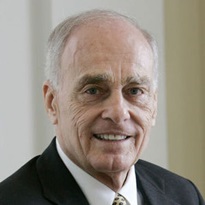
2015 – Vincent Bugliosi died of cancer at the age of 80.
He was an ambitious, yet obscure Los Angeles County deputy district attorney in 1969 but soon gained worldwide fame for his central role in prosecuting the Manson murders that terrorized California that summer.
Two years later, Bugliosi won the convictions of mastermind Charles Manson and the followers who carried out the Tate-LaBianca killings.
That he won convictions for those killings should not have come as a big surprise. During his time with the Los Angeles County District Attorney’s office, he successfully secured convictions in 105 of 106 felony jury trials, including 21 murder cases.
He used his celebrity status to launch a career as a bestselling author, beginning with Helter Skelter, his account of the Manson case that sold more than 7 million copies.
His other books included Outrage: The Five Reasons Why O. J. Simpson Got Away With Murder and The Prosecution of George W. Bush for Murder, in which he asserted that President Bush had misled Congress and the public in trying to justify the Iraq invasion.
Bugliosi had earlier questioned whether Bush should have even been in the White House, as he made clear in The Betrayal of America: How The Supreme Court Undermined the Constitution and Chose Our President, his 2001 book about the election of 2000.
Compiled by Ray Lemire ©2019 RayLemire.com. / Streamingoldies.com. All Rights Reserved.
Way behind on my history lessons, so starting with today’s and going back. Anyhow, I have a large hole in my memory. I don’t remember Topo Gigio at all!!!
Topo was adorable! 🙂